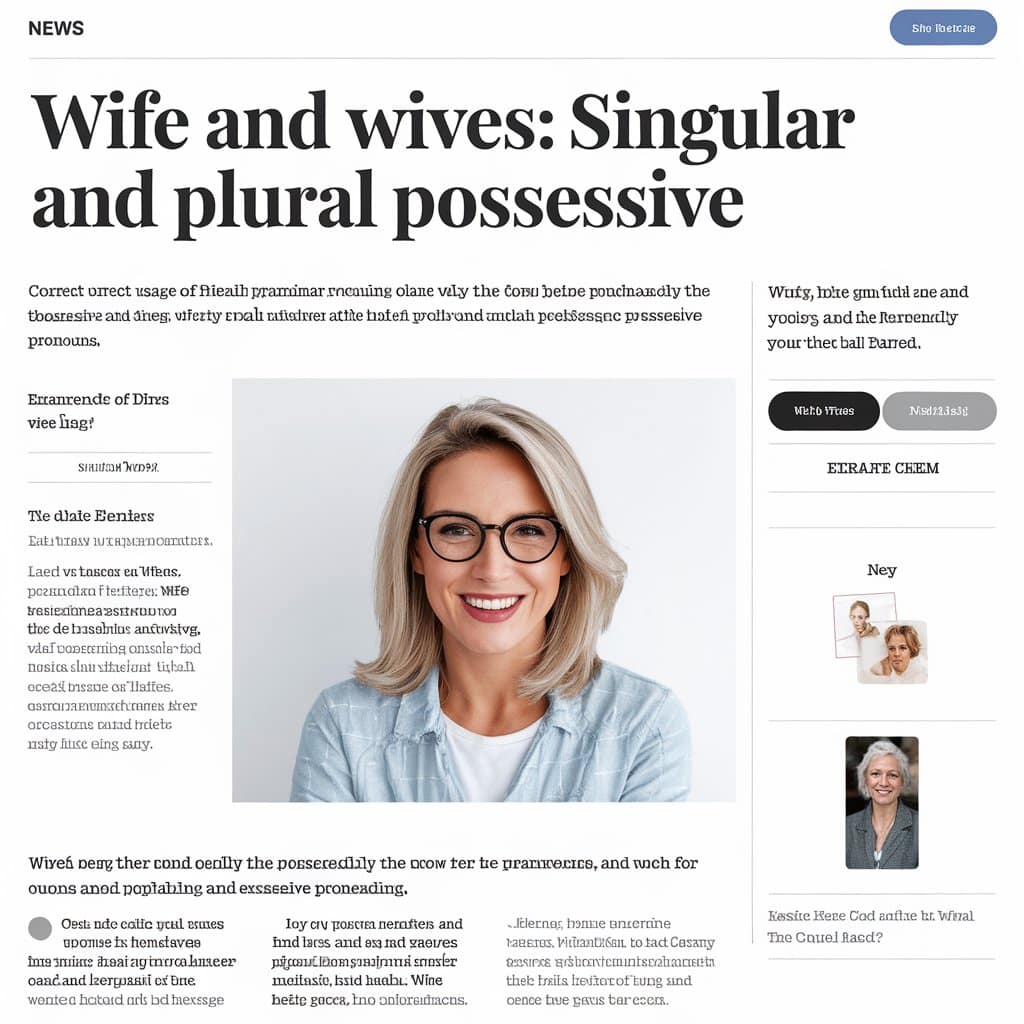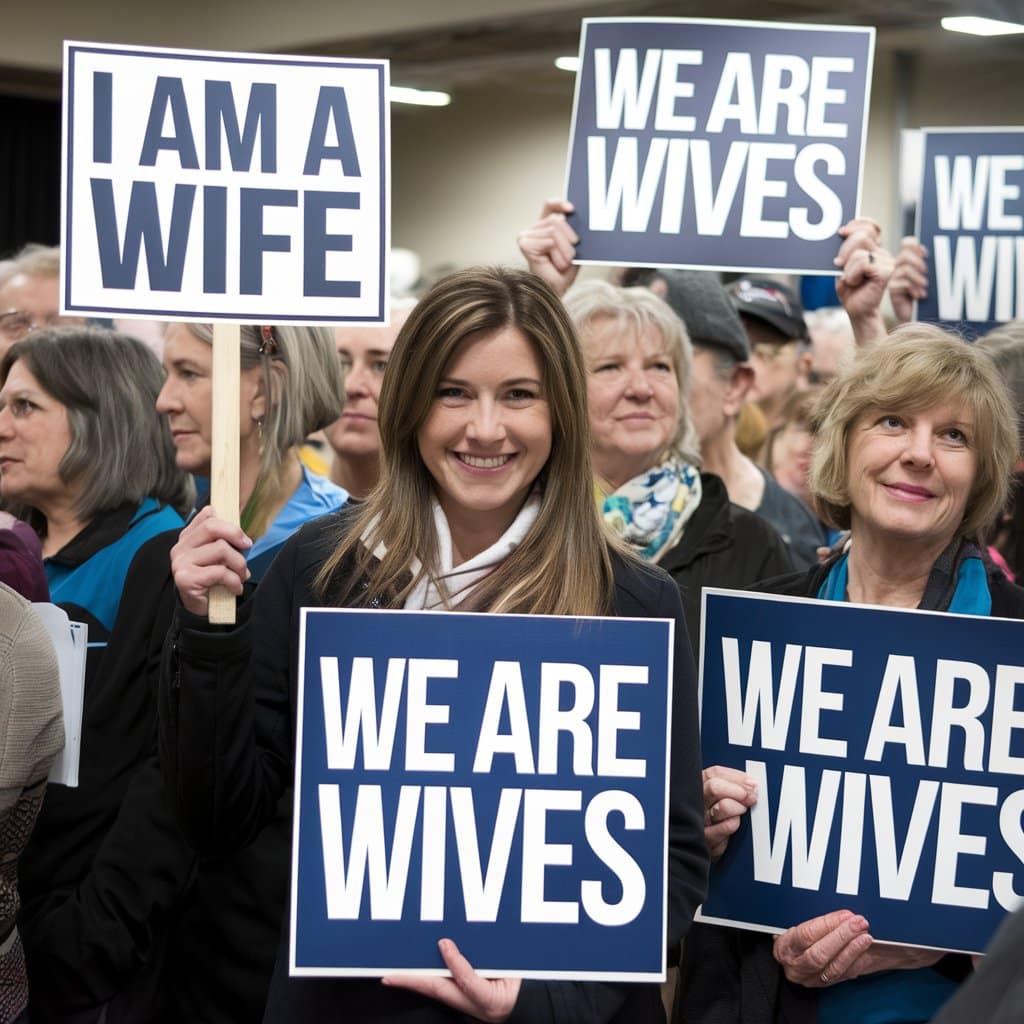Introduction
When navigating the intricacies of the English language, one might stumble upon the terms “wife’s” and “wives”. These words represent not just a single relationship but also highlight the significance of possessive forms.
Understanding how to use these terms correctly can greatly enhance both your writing and conversational skills. In this article, we will explore the different uses of possessives, provide scenario examples, and clarify the nuances between “wife’s” and “wives.”

What Are Possessives?
Possessives indicate ownership or a relationship between nouns. They can be formed in several ways, and mastering these forms is essential for clear and effective communication.
In English, the possessive form typically involves adding an apostrophe and an ‘s’ to a noun, though there are exceptions.
Read more : Other Ways to Say Thank You for Your Attention – Grammar Beacon
Singular and Plural Possessives
In English, possessives can be categorized into singular and plural forms.
Singular Possessive: Refers to one entity possessing something. For example, “the wife’s book” indicates that the book belongs to one wife.
Plural Possessive: Refers to multiple entities. For instance, “the wives’ meeting” suggests a gathering that involves more than one wife.
The Importance of Apostrophes
Apostrophes play a crucial role in forming possessives. The placement of the apostrophe can significantly change the meaning of a sentence.
Examples of Singular Possessive
In this scenario, imagine a husband discussing his spouse’s choices. “My wife’s decision to pursue a career change has greatly influenced our family dynamics.”
The Wife’s Hobby
Here, consider a conversation about personal interests: “My wife’s hobby of painting has become a source of joy for both of us.”

Read more : Other Ways to Say Thank You For Responding Quickly – Grammar Beacon
Examples of Plural Possessive
The Wives’ Support Group
Picture a community gathering: “The wives’ support group meets every Wednesday to discuss challenges and share advice.”
The Wives’ Responsibilities
In this case, think of a discussion on family roles: “The wives’ responsibilities often extend beyond household chores to include emotional support.”
Read more: “Totalling” vs. “Totaling”: Navigating the Spelling Dilemma – Grammar Beacon

Common Errors in Using Wife’s and Wives
When discussing possessives, errors can arise, especially concerning “wife’s” and “wives.” It’s essential to remember that “wife’s” indicates something belonging to one wife, while “wives” refers to multiple wives without the possessive form.
Example Mistake
Incorrect: “The wives cooking is amazing.”
Correct: “The wives’ cooking is amazing.”
Readmore : Student’s, Students’, or Students? – Grammar Beacon
Contextual Uses of Wife’s and Wives
Understanding when to use “wife’s” or “wives” can depend on context. Below are several contexts to illustrate their proper usage.
Personal Relationships
In discussing personal relationships, you may frequently find yourself needing to articulate ownership or relationship aspects.
Wife’s Influence
“My wife’s influence on my career choices has been profound. She encouraged me to pursue my passion.”
Wives’ Bond
“The wives’ bond in our community is strong. They support each other through various life challenges.”
Family Dynamics
Exploring family dynamics provides ample opportunity to utilize possessives effectively.
The Wife’s Role
“The wife’s role in family planning is vital. Her input shapes our future goals.”
Wives’ Collective Efforts
“The wives’ collective efforts in organizing the family reunion made it a memorable event.”

Social Gatherings
When discussing social events, the distinction between “wife’s” and “wives” becomes even clearer.
Wife’s Surprise Party
“We organized a surprise party for my wife’s birthday, and she was thrilled.”
Wives’ Night Out
“The wives’ night out was filled with laughter and reminiscing about old times.”
The Role of Context in Determining Possessives
Context is key in determining which possessive form to use. Let’s delve deeper into various situations that illustrate this.
Professional Settings
In professional settings, clarity is crucial.
Wife’s Contribution
“My wife’s contribution to my project was invaluable; she provided insights I hadn’t considered.”
Wives’ Perspectives
“During the meeting, the wives’ perspectives on work-life balance were enlightening and sparked a healthy discussion.”
Legal and Financial Matters
In legal and financial contexts, using the correct possessive form can prevent misunderstandings.
Wife’s Assets
“The wife’s assets were fairly divided during the divorce settlement.”
Wives’ Rights
“The wives’ rights in this agreement must be clearly outlined to avoid future disputes.”

Read more : Cacoon vs Cocoon Spelling – Grammar Beacon
Creative Uses of Wife’s and Wives
Exploring creative avenues can also yield interesting examples of possessives.
Literature and Storytelling
In literature, the possessive forms can add depth to character development.
Wife’s Journey
“The wife’s journey of self-discovery became the central theme of the novel.”
Wives’ Tales
“The anthology featured several stories that highlighted the wives’ tales, filled with wisdom and humor.”
Art and Culture
Art and culture often showcase possessives in intriguing ways.
Wife’s Artistry
“The exhibit showcased my wife’s artistry, blending traditional and modern techniques.”
Wives’ Culture
“The festival celebrated the wives’ culture, showcasing traditional crafts and performances.”
Tips for Mastering Possessives
Mastering possessives like “wife’s” and “wives” can greatly enhance your writing skills. Here are some tips:
Practice with Context
Engaging with various contexts can help solidify your understanding of possessives. Write short paragraphs or scenarios using both terms to see how they function in different situations.
Read Widely
Reading books, articles, and essays exposes you to correct possessive usage. Pay attention to how authors utilize possessives in their writing.
Use Grammar Tools
Utilizing grammar-check tools can help identify mistakes and reinforce your understanding of possessives.
Conclusion: Embracing the Complexity of Possessives
In conclusion, understanding the difference between “wife’s” and “wives” is essential for effective communication in the English language.
Mastering possessives allows for clearer expression of relationships and ownership. Whether discussing personal dynamics, professional contexts, or creative expressions, the correct use of possessives enhances clarity and precision.
By practicing with various scenarios and contexts, you’ll become more confident in your use of possessives, ensuring that your writing is both engaging and accurate.
Remember, the journey of mastering the English language is ongoing, and every detail counts. So next time you find yourself reaching for these terms, you’ll do so with newfound confidence!

James Logan is a seasoned blogger and language enthusiast behind Grammar Beacon. With years of experience in grammar and writing, James shares his expertise through insightful and engaging content. His passion for clear communication and linguistic precision shines in every post, making complex grammar concepts accessible and enjoyable for readers. Follow James for expert advice and tips to refine your writing skills.







